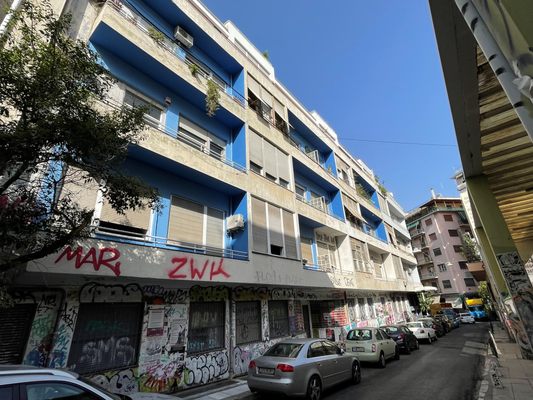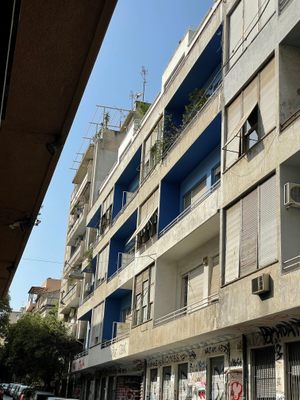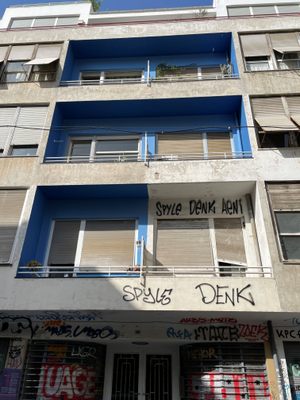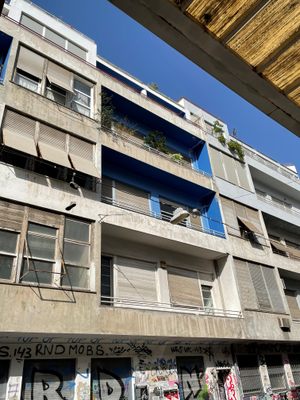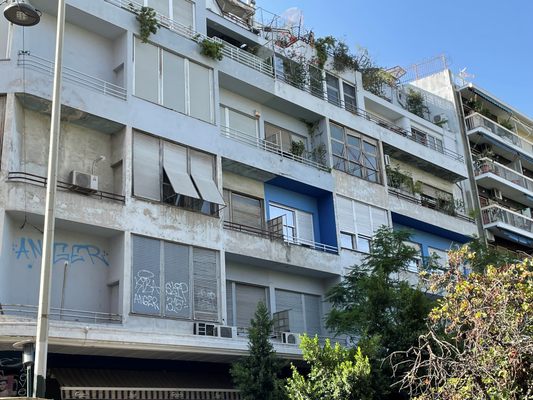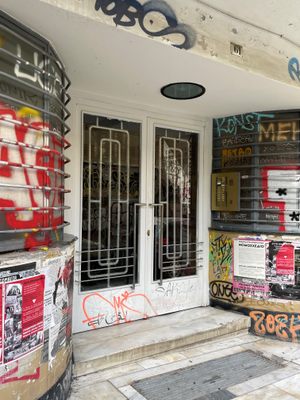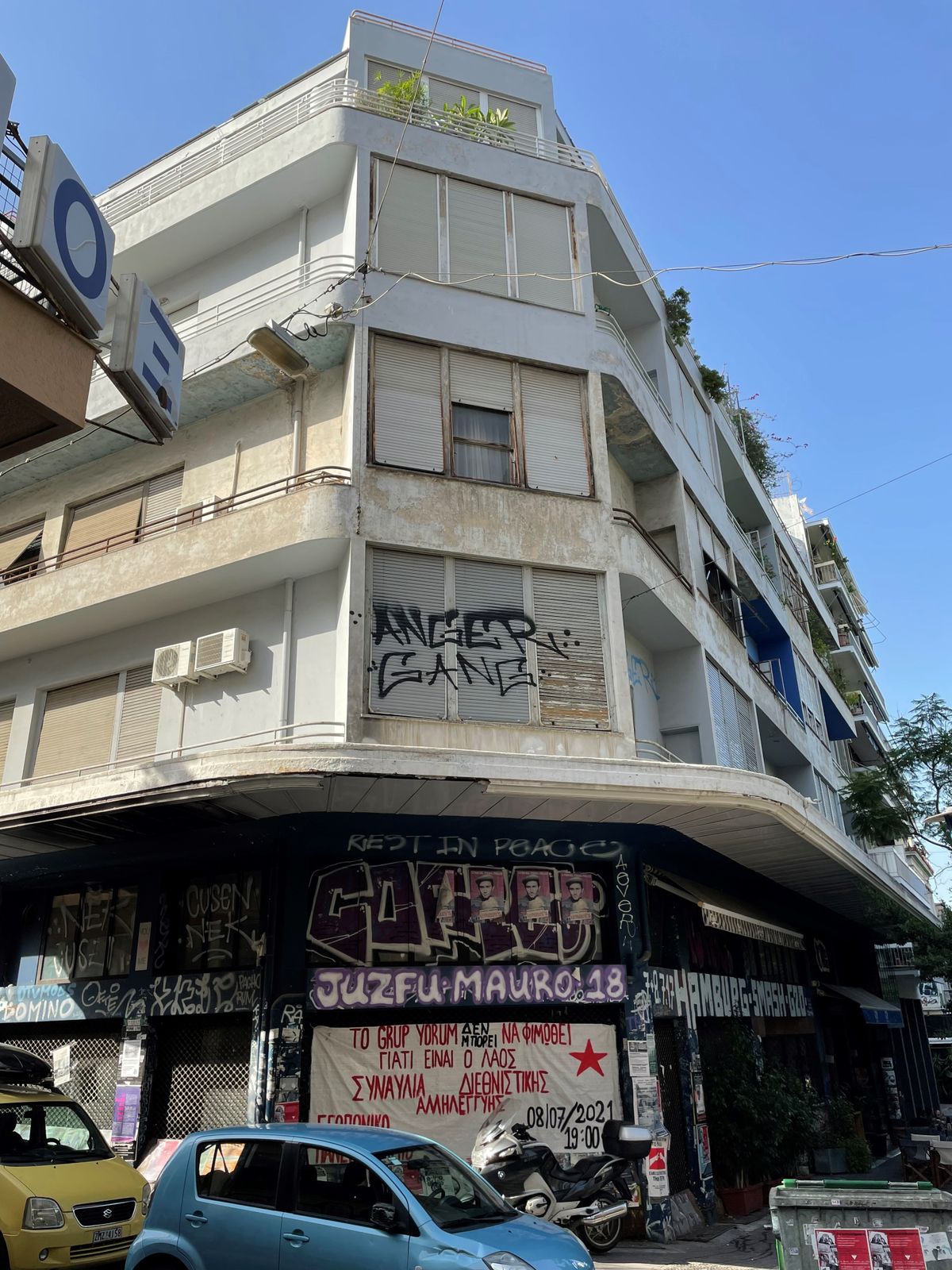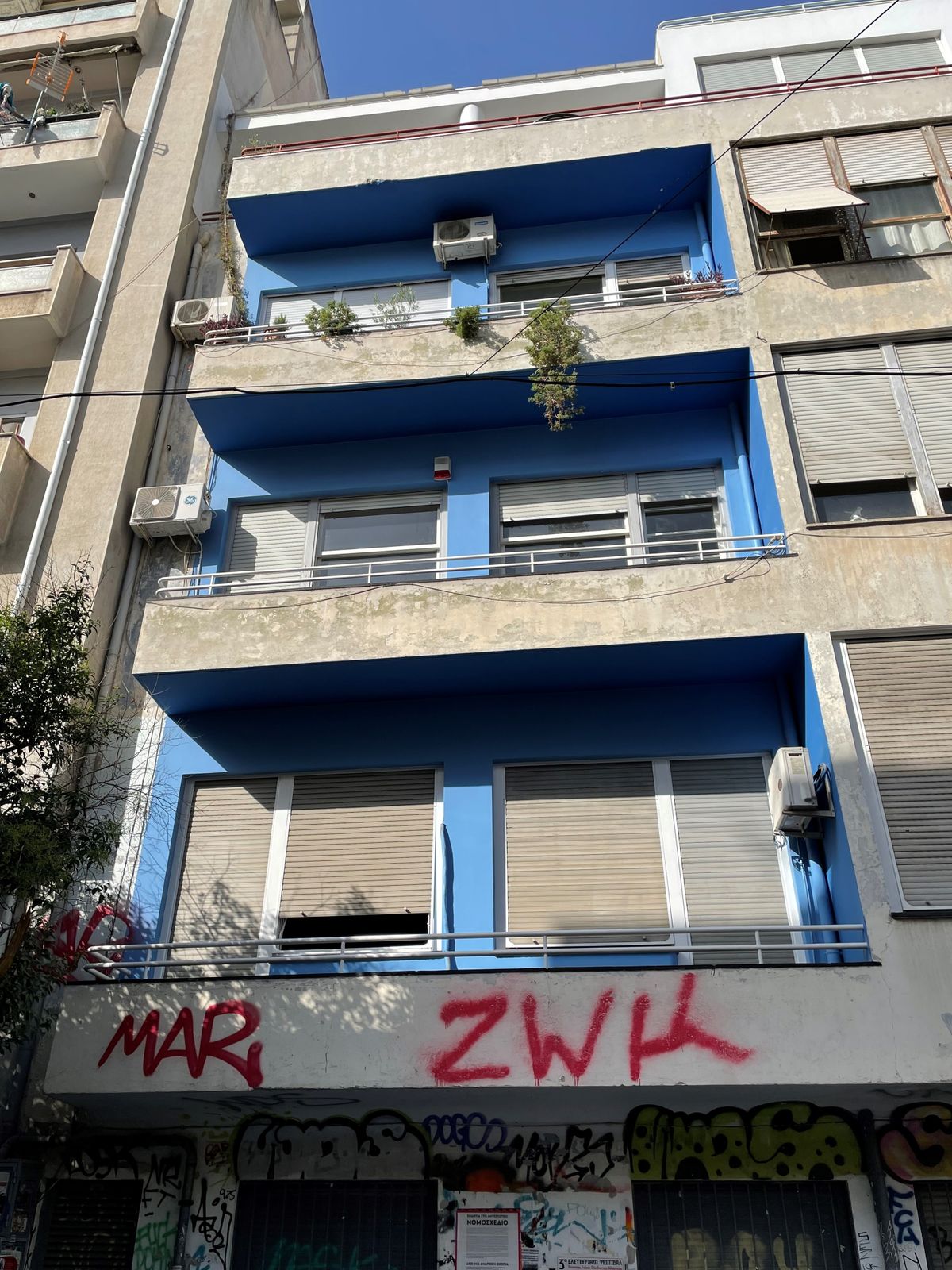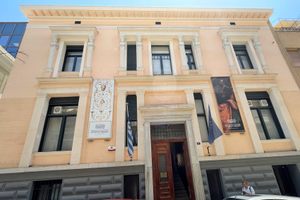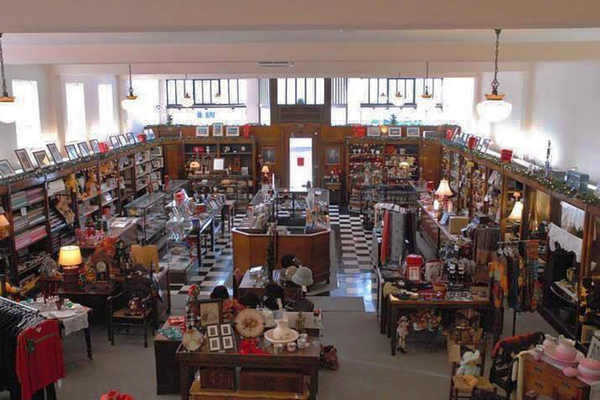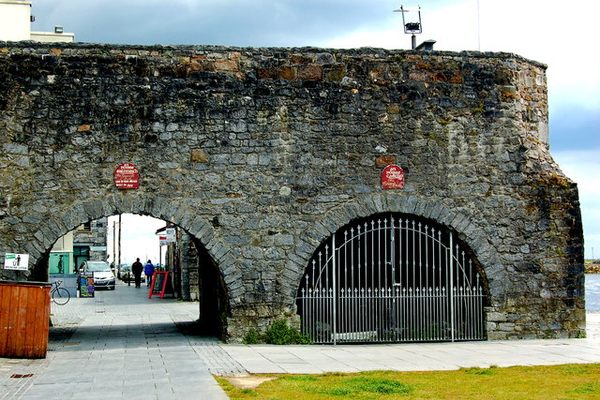About
The central Athens district of Exarcheia was formally established in the 1870s. It began as a labor settlement, and by 1910 it was a thriving middle-class neighborhood with a nice mix of businesses and residences. In the 1920s, Kostis Antonopoulos purchased land in the area with the goal of building large, modern multi-family housing. Antonopoulos and his family owned a large construction company and had experience with large projects. Antonopoulos hired two men to assist him with the project: architect Kyriakoulis Panayiotakos and painter Spyros Papaloukas.
At the time Athens consisted of mostly neutral-colored neoclassical buildings. Panayiotakos and Papaloukas embraced a philosophy of revitalization with radical new architecture and Antonopoulos eagerly approved their plans, with construction commencing in 1932.
Completed in 1933, the complex consisted of 32 modern units on two independent six-floor buildings that were joined together at the top floor with shared light wells beneath. The units were hard furnished, with cabinets, drawers and closets included. Much attention was given to the common areas, specifically the two entry halls, corridors, staircases, laundry room, and the meeting room on the top floor. One of the unique features Papaloukas contributed was the inclusion of bright cobalt blue paint as a dominant color on the exterior of the building.
At the time, the size of the Blue Polykatoikia was impressive, overwhelming the one and two-story houses in the area. Modern amenities were new to most of the residents and the innovative design presented a new middle-class lifestyle for them. The Blue Polykatoikia became a thriving prototype complex that began a construction boom of apartment blocks in the area that continued until the 1940s. The complex became a prime example of successful urban architecture.
Shortly prior to Greece's entry into World War II, the Blue Polykatoikia was requisitioned by the military for use by the Greek Counterintelligence Organization. When the German Army entered Athens in April 1941 they took over and utilized the buildings until they retreated in October 1944 at which time they reverted back to Greek government use.
In later years the complex was returned to civilian use and the meeting room was separated into seven new apartments, increasing the total number to 39 units. In the 1970s, anarchists and far-leftist groups began occupying the area, as well as recent migrants. After decades of neglect by the city, the Blue Polykatoikia shows little sign of its prior bright blue cobalt magnificence. It does not appear the Blue Polykatokia will see any major improvements any time soon.
Related Tags
Know Before You Go
It is recommended caution be exercised when visiting as Exarchia has historically been a high crime area. Also be respectful the the residents as many do not take kindly to being photographed.
Community Contributors
Added By
Published
January 10, 2022
